The sand tunnel near the village of Lyubovishte

Lyubovishte is a small mountain village in southwestern Bulgaria, which offers a great opportunity for travel for those of you who like to visit little-known places. The village is part municipality of Sandanski and until 1966 was called Lyubovishta.
Most visitors to the municipalities of Sandanski and Rozhen often turn to more famous landmarks such as Rozhen Monastery and Melnik Pyramids. But besides them in the region there are other little-known landmarks that are also of interest to the tourists.
One of these landmarks is the picturesque village of Lyubovishte, which due to its location remains out of sight. But if you plan to visit the municipality of Sandanski, then you should take time on your route to Lyubovishte, for which you will not regret.
The village of Lyubovishte is located in a place with picturesque nature, which makes it an attractive place for tourists from the country and abroad. Characteristic features of the relief of the region are the sand chalks, whose structure is extremely crumbly.
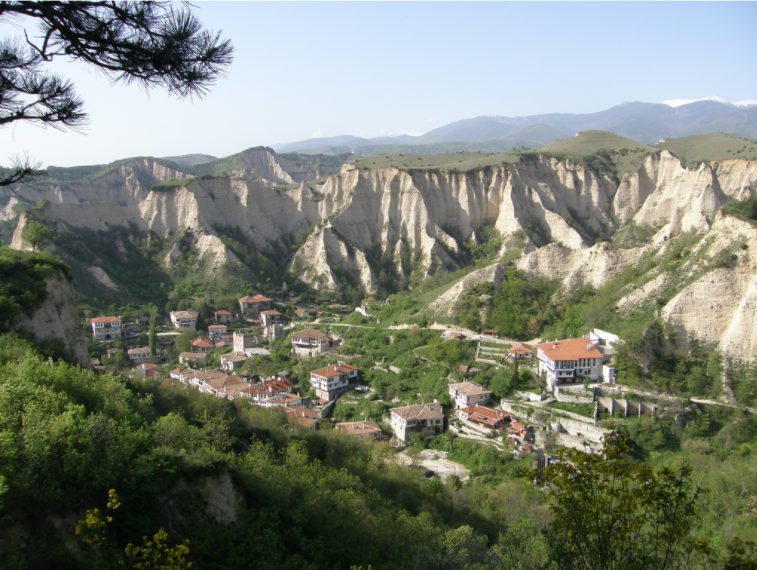
The village keeps forgotten stories from the past and tells them to each visitor. A curious fact about the village of Lyubovishte is that its inhabitants are only 20.
The village itself has a calm and ancient atmosphere, which is achieved by old clay houses of the inhabitants. The main livelihood of the local population is the breeding of sheep and goats.
Perhaps the most interesting fact about the village is that the only road leading to it is through a 40-meter sand tunnel in a weakly welded sandstone, which has become a symbol of the village. And this is not just an ordinary tunnel, but a tunnel passing through a sand pyramid, which was handmade by the villagers in 1961.
Then the residents asked the municipality to build a tunnel to connect their village with the nearby village of Rozhen and the main roads around it. The reason for this was that Lyubovishte was surrounded by sand-clay chalks, through which there was no road, and there was no option for the residents of the village.
But the municipality was respond really slow and the residents decided to build their own road. With the help of picks and shovels, they dug a tunnel in one of the crumbly sand chalks without relying on any technique. The tunnel was fully completed in a year.
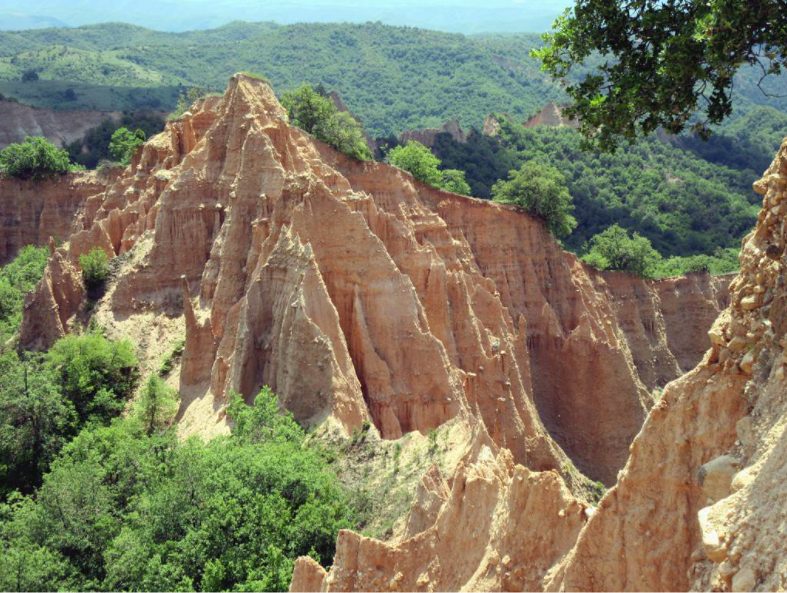
When did the village of Lyubovishte appear and what are the interesting facts about it?
In the 19th century the village was inhabited mainly by Bulgarians and it was part of the Melnik kaza of the Ottoman Empire.
According to its etymological origin, the name “Lyubovishta” comes from the patronymic of -ishti from the personal name Lyubo. In the past Lyubovishte was known by the names “Libovitsa” and “Lebovovichta”.
According to historical sources, such as the Ethnography of the Provinces of Adrianople, Monastir and Thessaloniki dating back to 1878, there were 22 households and 70 Bulgarians in the village of Lyubovishte during this period.
And according to the statistics from “Macedonia. Ethnography and statistics” by Vasil Kanchov in 1900 in Lyubovishte lived 250 people, of whom 200 Bulgarians and 50 Turks.
At the beginning of the 20th century the village was under the influence of the Constantinople Patriarchate. According to the statistics “La Macédoine et sa Population Chrétienne” published by Dimitar Mishev (Secretary of the Bulgarian Exarchate) in 1905, the population of Lyubovishte consists of 160 Bulgarian Greeks.
How to get there?
The village of Lyubovishte is less than 8 km away from the town of Melnik and is in distance of 2 km. from the Rozhen Monastery. We can reach the village by going in the direction of the village of Rozhen.
At its entrance there is a sign indicating the direction to the sand tunnel. At this point the asphalt road ends and changes to a steep and uneven path. Continuing along it you will reach the entrance of the tunnel near the village.
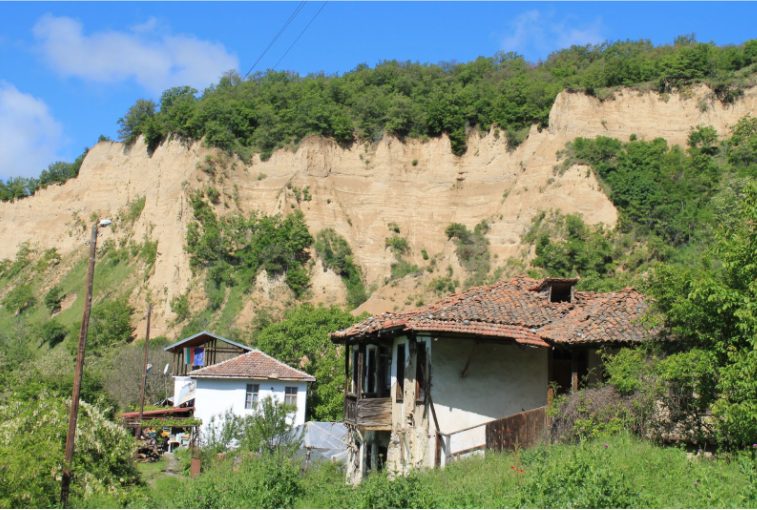
Legends about the name of the village of Lyubovishte
The name of the small mountain village is actually associated with an interesting and romantic story. In the past the village was large and consisted of two neighborhoods – upper and lower. In the upper neighborhood lived a girl named Lyuba, and in the lower lived a boy.
The two were in love and the girl often went down the main road of the village to the house of her lover. And every time she passed down the road, everyone who looked at the street through the windows or the yards of their homes said “Look, Lyuba!” Accordingly, the name of the beautiful village derives from this expression.
There is another legend associated with the name of the village, which is more tragic. It also tells the story of a beautiful girl named Lyuba, who lived in the village of Lyubovishte. The pasha of Melnik liked her as a woman and wanted to take her to his harem.
Since his word was the law and the girl knew that her refusal to become his wife would not be accepted, she decided to hang herself in the meadow from which the village could be seen. So everyone who passed by saw the girl and said “Lyuba, look!”
Other landmarks in the region of Lyubovishte
Kashina waterfall in the village of Kashina

For those of you who love adventures to little-known beautiful places, waterfall “Skoka” near the village of Kashina is a suitable place to visit. The village of Kashina is located in the southern parts of Pirin Mountain, 8 km. from the village of Rozhen and Skoka, the waterfall is one of the most charming places in the region that you should not miss.
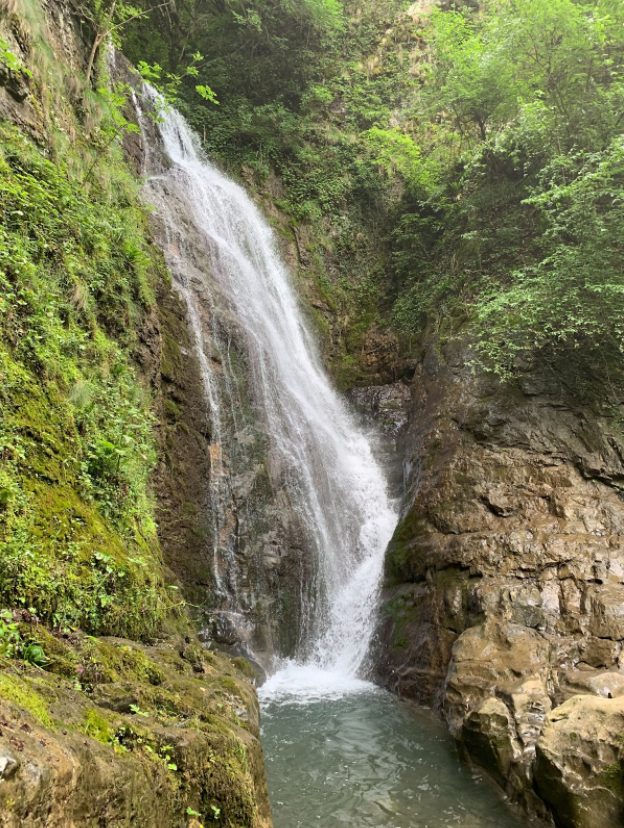
The waterfall impresses with its width and powerful water flow. Its waterfall is 20 m high. It can be reached quickly by car on a dirt road that passes through the sand tunnel near the village of Lyubovishte.
There are several signs for Skoka waterfall starting from the center of the village, so everyone should be able to find their way around easily. The waterfall is also called “Skoko” by the locals.
The place of death of Yane Sandanski
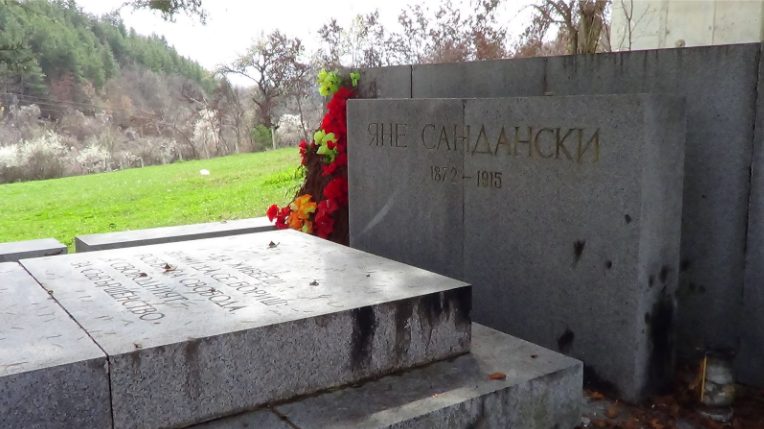
For those of you who love history, this place would certainly be of interest. The place of execution of the Macedonian revolutionary is 7 km away from Popovi meadows in the Pirin area Blata . It is located right on the road between Gotse Delchev and Petrich.
Yane Sandanski died at this place on April 20, 1915 while traveling from the Rozhen Monastery to Nevrokop. On his way he stayed in the village of Pirin and the next day he went to the passage at Papaz Chair. There he was attacked by a group of eight men armed with rifles, one of whom shot him in the back.